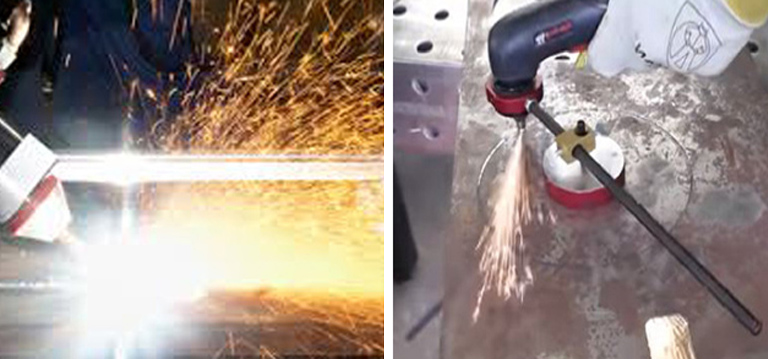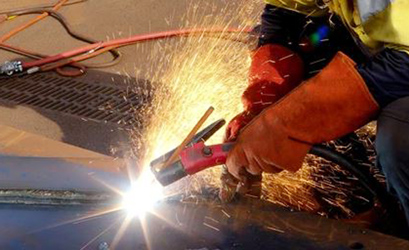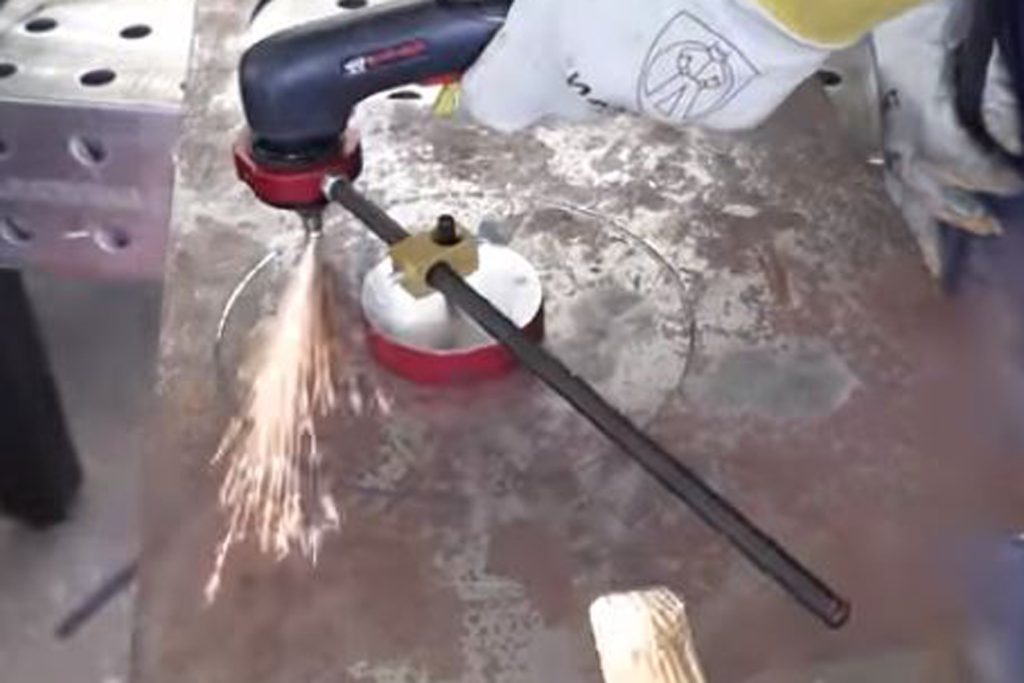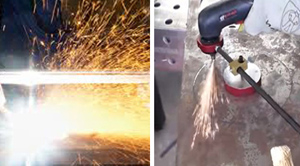Metal cutting is an essential process in various industries, and the choice between air carbon arc cutting and plasma cutting can significantly impact the final outcome. Both methods have their own unique advantages and applications, making it crucial to understand the nuances of each technique.

Air Carbon Arc Cutting
Air carbon arc cutting, also known as air arc cutting or arc gouging, is a versatile process that involves using a carbon electrode to generate an electric arc. This arc melts the metal, while a continuous blast of air removes the molten material, resulting in a precise and controlled cut. This method is particularly effective for cutting, gouging, and removing weld defects in a wide range of materials, including steel, stainless steel, copper, and aluminum.
Plasma Cutting
Plasma cutting, on the other hand, utilizes a high-velocity jet of ionized gas (plasma) to melt and expel the metal. The plasma is created by passing an electric arc through a gas that is forced through a constricted opening. This process allows for quick and precise cutting of electrically conductive materials, such as steel, aluminum, brass, and copper.
Pros and Cons of Air Carbon Arc Cutting
Pros of Air Carbon Arc Cutting:
Versatility: Air carbon arc cutting is highly versatile, capable of cutting, gouging, and removing weld defects in various materials.
Control: This method offers exceptional control, making it ideal for dealing with irregular joints and achieving precise cuts.
Cost-Effectiveness: Air carbon arc cutting can be a cost-effective alternative, especially for applications that require precision and versatility.
Cons of Air Carbon Arc Cutting:
Heat-Affected Zone: The process can lead to a larger heat-affected zone, affecting the overall integrity of the metal being cut.
Limited Thickness: Air carbon arc cutting may not be as effective for cutting thicker materials compared to plasma cutting.
Environmental Impact: The use of carbon electrodes in this method can produce carbon emissions, posing environmental concerns.

Pros and Cons of Plasma Cutting
Pros of Plasma Cutting:
Speed and Precision: Plasma cutting offers rapid and precise cutting of various conductive metals, producing clean and high-quality edges.
Minimal Heat-Affected Zone: The process generates minimal heat, reducing the potential for distortion in the cut metal.
Thickness Capacity: Plasma cutting is suitable for cutting a wide range of material thicknesses, making it versatile for different applications.
Cons of Plasma Cutting:
Conductive Materials: Plasma cutting is limited to electrically conductive materials, restricting its application to non-conductive materials.
Initial Investment: The equipment required for plasma cutting can be more expensive compared to air carbon arc cutting, necessitating a higher initial investment.
Gas Consumption: Plasma cutting requires a continuous supply of gas, which can lead to higher operational costs.

Key Differences Between Air Carbon Arc Cutting vs Plasma Cutting
The primary differences between air carbon arc cutting vs plasma cutting lie in their mechanisms of metal removal and the specific applications for which they are best suited. Air carbon arc cutting excels in providing exceptional control and versatility, making it an ideal choice for tasks that demand precision and maneuverability.
On the other hand, plasma cutting stands out for its speed, precision, and ability to handle a wide range of material thicknesses with minimal heat-affected zones.
Applications and Industries for Air Carbon Arc Cutting
Air carbon arc cutting finds its application across various industries, including metal fabrication, shipbuilding, construction, and manufacturing. Its ability to cut, gouge, and remove weld defects makes it invaluable for tasks such as preparing joints, repairing metal components, and removing unwanted material from workpieces. Additionally, its versatility in working with different materials makes it a preferred choice for tasks that require intricate and controlled cutting operations.
Applications and Industries for Plasma Cutting
Plasma cutting is widely employed in industries such as automotive, aerospace, metal artwork, and industrial manufacturing. Its ability to swiftly cut through conductive metals with minimal heat-affected zones makes it suitable for applications that demand high precision and clean cuts. From intricate metal artwork to heavy-duty industrial components, plasma cutting is favored for its efficiency and ability to handle a diverse range of material thicknesses.
Choosing the Right Cutting Method for Your Project
When selecting between air carbon arc cutting and plasma cutting for a specific project, it is vital to consider factors such as material type, thickness, required precision, and overall budget. For tasks that demand intricate control and versatile cutting capabilities, air carbon arc cutting may prove to be the ideal choice. Conversely, projects that prioritize speed, precision, and minimal heat distortion may benefit from the efficiency of plasma cutting. Understanding the specific requirements of the project and the capabilities of each cutting method is essential for making an informed decision.
Tips for Maximizing Efficiency and Safety in Air Carbon Arc Cutting
To maximize efficiency and safety in air carbon arc cutting, it is crucial to adhere to best practices and safety guidelines. This includes ensuring proper ventilation to mitigate the impact of carbon emissions, using the appropriate current and electrode size for the specific task, and maintaining a consistent angle and distance between the electrode and the workpiece. Additionally, regular inspection and maintenance of equipment, along with adequate training for operators, are essential for safe and efficient air carbon arc cutting operations.
Tips for Maximizing Efficiency and Safety in Plasma Cutting
In plasma cutting, efficiency and safety can be optimized through proper equipment maintenance, including the regular inspection and replacement of consumables such as nozzles, electrodes, and shields. Training operators on the correct techniques for setting the gas flow, amperage, and cutting speed is crucial for achieving precise and efficient cuts while ensuring operator safety. Furthermore, maintaining a clean work environment and adhering to safety protocols related to gas handling and ventilation are essential for safe and effective plasma cutting operations.
Conclusion
The choice between air carbon arc cutting and plasma cutting significantly impacts the efficiency, precision, and overall outcome of metal cutting processes. While air carbon arc cutting offers exceptional control and versatility, plasma cutting excels in speed, precision, and minimal heat-affected zones. Understanding the specific requirements of a project, along with the capabilities of each cutting method, is essential for making an informed decision.
By leveraging the strengths of air carbon arc cutting and plasma cutting, industries can optimize their metal cutting processes and achieve superior results in their fabrication endeavors.
